8 Consciousness-raising
8.1 Introduction
In this chapter, the Ministry will provide an account of some issues associated with video games: violence, dependency and illegal copying. First, we will give a general description of the public debate concerning video games and violence, which has involved a number of measures, including the voluntary labelling scheme Pan European Game Information (PEGI), of which the Norwegian Media Authority is the Norwegian collaborator. The Ministry describes how the scheme is structured and the results that the scheme has had. There has been increasing concern surrounding the problematical use of video games. This particularly applies to online games. The Ministry provides a description of this problem area and the measures implemented in the area. Finally, the Ministry provides a description of the issues associated with illegal copying and copyright.
8.2 Games and effects
In Norway, there has from time to time been a public debate concerning violent video games and the possible negative effects of the games on children and young people. In recent years, a number of controversial games have been released that have resulted in political reactions and reports in the media, both in Norway and elsewhere in Europe.
For example, in spring 2007, the controversial game Manhunt was released – a game that in an earlier version had been banned in a number of countries. This resulted in reactions against violent games. Manhunt was temporarily banned in the USA, the UK and Ireland. The game was withdrawn from the market, and a more moderate version was later produced.
In autumn 2006, the video game Rule of Rose caused a furore in Europe, and doubts were raised about the regulation of video games in the European market. The attention was largely owing to the strong reactions to the video game by the EU Commissioner Franco Frattini following a report in one of Italy’s popular magazines. Frattini submitted a demand to all of the foreign ministers of the EU member states that the game should be stopped. The game was later withdrawn from the market owing to all of the negative publicity.
In Norway, violence in video games may be subject to section 382 of the Penal Code, which prohibits “improper use of scenes of gross violence for entertainment purposes”. In 2003, the video game Grand Theft Auto was reported to the police by the Commissioner for Children and the Norwegian Consumer Council for infringement of this section of the Penal Code. The case was finally dropped by the police.
8.2.1 Pan European Game Information – PEGI
At about the same time as the debate concerning Grand Theft Auto , the labelling scheme for video games, Pan European Game Information (PEGI), was established. The establishment of PEGI was a signal from the industry of the desire for better information on the content of games. The labelling scheme was also a necessary measure on the part of the industry in view of the various controversies surrounding violent content of video games and the effects of this on children and young people. The industry preferred self-regulation at the European level to national regulation by law. The labelling scheme was introduced in spring 2003, and was well received by the political authorities of European countries as well as in Norway. The European Commission has also on several occasions expressed approval of this scheme.
PEGI is owned by the trade organization Interactive Software Federation of Europe (ISFE) which is responsible for the system. The members of this scheme undertake to label the game cases with the PEGI labels and symbols. The PEGI system is a voluntary, self-regulatory system, where classification is carried out by the members themselves. The system has gradually gained acceptance from the whole of the European video game industry, and is used in all European countries except Germany, which has statutory age classification.
The main purpose of PEGI is to provide information on whether the content of a game is suitable for a specific age group, in addition to indicating what content forms the basis for the classification. The age labelling is intended to be a recommendation on whether the game’s content is suitable for children, and not on the level of difficulty. The PEGI system has developed different symbols for the various age ratings and the content that forms the basis for the age rating, cf. figure 8.1.
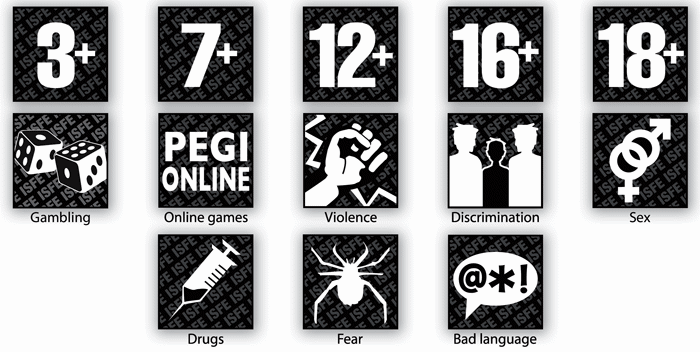
Figure 8.1 The PEGI symbols.
Source Norwegian Media Authority/Interactive Software Federation of Europe
The age ratings are printed on the front of the game’s case. On the back of the case are displayed the symbol(s) for the content of the video game.
There are special challenges associated with online games. PEGI has therefore developed a separate online system with support from the European Commission’s programme Safer Internet Plus. In order to use this symbol, the publisher undertakes to keep the website free of illegal and offensive content created by users and undesirable links. The publisher also undertakes to implement measures to protect under-aged net players and to protect privacy.
The PEGI Online label is printed on the game’s case or displayed on the game’s website. The label points out to parents that the game can be played on the Net, and that the owner of the game or website wishes to protect under-aged players.
Since spring 2003, almost all video games in Europe have been rated in the PEGI system. This means that more than 200 companies have signed an agreement with the ISFE in order to be authorized to use the PEGI labels. Since 2003, more than 7 000 ratings have been licensed under PEGI. As shown in figure 8.2, most games receive the age rating 3+. Games with the 18+ rating (3 per cent) usually have considerable violent content.
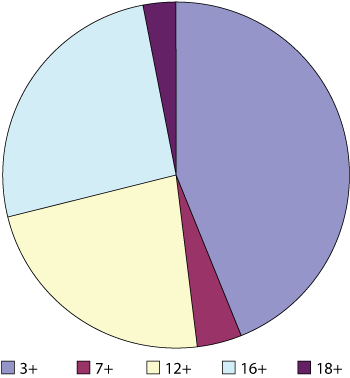
Figure 8.2 Distribution of age classifications during the period 2003–2007.
Source Norwegian Media Authority/Interactive Software Federation of Europe
Surveys conducted by the Norwegian Media Authority and the trade organization ISFE indicate a major need for knowledge about the labelling scheme. The Norwegian Media Authority, which is a member of the PEGI scheme’s advisory body, has therefore placed an emphasis on strengthening the information about the scheme in cooperation with the Norwegian game distributors. In Norway, a campaign on age labelling of video games was carried out in 2005. The Norwegian Media Authority also carried out an information campaign in connection with Christmas 2007 in cooperation with the Norwegian Association of Game and Multimedia Suppliers (NSM) and the Danish Media Council for Children and Young People.
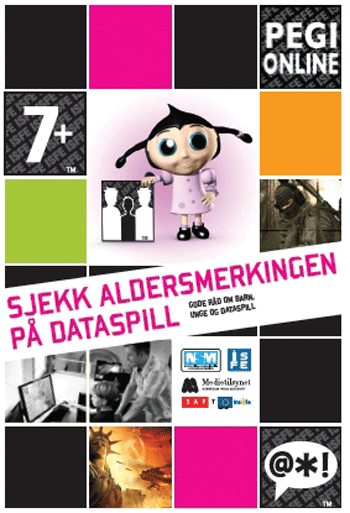
Figure 8.3 Brochure on PEGI published Christmas 2007.
Source Norwegian Media Authority
8.3 Problematical use
Dependency on gambling games has received considerable attention in Norway in recent years. In this connection, concern has also been shown for problematical use of online games, such as World Of Warcraft . This is a link that may give rise to certain misunderstandings.
The word dependency has a clinical meaning in relation to drug dependency, etc. which has been transferred to dependency on gambling games. In the Norwegian diagnostic system for mental health care (F63-0), gambling game dependency has the following definition:
“The disorder consists of frequent, repeated episodes of gambling games that dominate the patient’s life, thereby destroying social, occupational, material and family values and obligations.”
It is important to distinguish between “problem gaming” and “problem gambling”. The biggest difference can be said to be the type of stimulus provided by playing the game. In gambling games, it is the excitement associated with winning money or material goods that provides the stimulus. By betting a lot, in the hope of winning more, a vicious circle of dependency on various forms of gambling games may arise. In the case of video games, it is not a matter of winning or losing money. Here, the stake is one’s time and social ties.
In the case of video games, it is usually in connection with role-playing games on the Internet, cf. 2.3.1, where one belongs to a social network in the game and can attain status and feel that one has a bond and social ties with the people one plays with, that a type of “dependency” may arise. The consequences may be a feeling of loyalty to the group one plays together with, even if this damages family relationships, work, studies or personal relations and obligations.
We still have little knowledge of what video game dependency involves. No verified theory or practice for this has yet been developed and, in June 2007, the response from the American Medical Association was that video game dependency would not be defined in “The Diagnostic and Statistic Manual of Mental Disorders”. Dependency on video games is thus not a clinical term, and is not considered a mental disorder.
However, in the research literature, it is pointed out that some children can develop problematical use of games. In the present report the term “problematical use” is therefore adopted rather than the clinical term “dependency”.
8.3.1 The role of the Norwegian Gaming Authority
The Norwegian Gaming Authority is a state body consisting of two inspectorates with a single director and administration. The purpose of the Authority is to supervise and control private lotteries and state gambling games. The Gaming Authority is responsible for follow-up of negative aspects of gambling games and lotteries, among other ways, by encouraging research, but also by preparing proposals for and providing information on necessary measures. Lottery is defined in the Act of 24 February 1995 No. 11 relating to lotteries, etc. (the Lottery Act). In the first paragraph of the Lottery Act, lottery is defined as “an activity in which participants may for a stake acquire a prize as a result of a draw, guesswork, or other procedure which wholly or in part produces a random outcome”. Video games do not normally fall under the Lottery Act.
8.3.2 Help Line for Game Dependency
The Help Line for Game Dependency, established and financed by the Norwegian Gaming Authority and Sykehuset Innlandet, reports an increase in the number of enquiries from people who have become dependent on video games. Similar reports have also been made by other health service institutions. For example, the private child welfare centre Seksten-treogtyve AS [Sixteen–twenty-three AS] that was established in Oslo og Akershus in 1998, reports an increased number of enquiries concerning young people struggling with excessive use of video games.
In its half-year statistics for the first half of 2007, the Help Line for Game Dependency reports an increase in the number of calls concerning games where no money is involved. By games where no money is involved, we refer primarily to online games such as World of Warcraft and Counter-strike . In the first half of 2007, there were 96 callers who referred to video games as the main problem, whereas, during the whole of 2006 there were only 49 such calls, cf. table 8.1.
Table 8.1 Figures for players whose main problem is games via the Internet, PC and/or mobile telephone
| 2006 (twelve months) | 2007 (first six months) | |
|---|---|---|
| Poker | 122 | 82 |
| Prize machines | 27 | 11 |
| Other gambling games | 14 | 6 |
| Odds | 14 | 9 |
| Bingo | 1 | 2 |
| Lotto/Extra | 0 | 1 |
| Horse racing | 6 | 5 |
| Casino | 6 | 3 |
| Football pools | 4 | 0 |
| Games not involving money | 49 | 96 |
| Sum | 243 | 217 |
Source Help Line for Game Dependency
The statistics for the first half of 2007 also show that 41 per cent of the players played on one or more electronic platforms. By way of comparison, the proportion was only 18 per cent in 2006. This increase may be due to the increase in calls concerning video games.
“Games not involving money” occur in the report from the help line on an equal footing with gambling games. This category has been responsible for an increasing number of calls to the help line. There is some uncertainty regarding what this category includes. Until July 2007, no specific information was registered regarding which games these calls concerned. The introduction of better registration of content and time consumption will provide better insight into whether the calls concern poker on the Internet or time spent playing online role-playing games.
The results also show that a greater percentage of players who play without money are in the age group under 25, cf. table 8.2. We would mention in this context that calls to the help line are usually made by close relatives of the persons concerned. Out of 111 calls in 2007, 21 per cent were made by players themselves. Altogether 76 per cent of the calls were made by close relatives.
Table 8.2 Proportion who play without money
| Under 18: | 65 per cent |
| 18 – 24: | 41 per cent |
| 25 – 39: | 10 per cent |
| 40 – 59: | 3 per cent |
| 60 and older: | 0 per cent |
Source Help Line for Game Dependency
8.4 The Safe Use Project
The Safe Use Project is a national coordinative body for safe use of interactive digital media for children and young people. The project is part of an EU-funded programme, Safer Internet Plus, the aim of which is to promote safe use of the Internet among children and young people in the EU and EEA area. In Norway, the project is administered by the Norwegian Media Authority.
The goal of the Safe Use Project is to teach children and young people how to reduce “hazardous behaviour” and become responsible Internet users. In addition, the project provides information to teachers, parents and the Internet industry concerning challenges and issues associated with interactive digital media.
The project has collaborators in several countries, Norwegian participants include ICT Norway, the Office of the Consumer Ombudsman, the Norwegian Data Inspectorate and six different ministries. Nordic collaborators include the Danish Media Council for Children and Young People, the Swedish Media Council and Heimili og Skoli in Iceland [national Icelandic association for parents of children in primary and comprehensive school (aged 6–16)].
Surveys of children and young people’s media usage plays a major role in the project. The results of the surveys culminate in concrete information measures aimed at increasing awareness of safe use of the Internet, mobile telephones and video games among children, young people, parents and teachers. Video games are one of the areas where a need is seen for effective information measures. There is a net portal that functions as a joint information resource for all users, parents, children, teachers, the press, organizations and politicians: www.tryggbruk.no.
8.5 Illegal copying
8.5.1 Introduction
Illegal copying and illegal distribution of video games are extremely common. A very short time often elapses from the date a new game is put on the market until illegal copies of it appear on the Internet and elsewhere. Increasing use of digital media, higher broadband speeds and increasingly better general technical expertise and equipment among users all provide major challenges for the video game industry. Illegal copying of music, films and video games has been a problem since it became possible by means of recorders, and later digitizing of the media. While in some parts of the world there is extensive sale of physical pirate copies, in the western world, illegal copying increasingly takes place digitally by means of illegal file sharing.
A number of game manufacturers confront the problem by focusing more on online games and console games than on PC games in order to be able to demand payment for using them.
The mobile telephone video game industry is also experiencing a certain degree of illegal copying. However, this is not viewed as such a major problem by the industry since mobile telephone games must be developed to support a specific type of mobile telephone. This means that a mobile telephone game that the user for example finds on the Internet, cannot necessarily be played on the user’s mobile telephone.
The video game industry has many challenges to deal with in the future if it is to succeed in curbing illegal copying. Firstly, there must be a change of attitude among users. There is also a need for consciousness-raising as regards use of digital materials concerning what is permitted and what is illegal. These matters are regulated by the Copyright Act (the Act of 12 may 1961 No. 2 relating to copyright in literary, scientific and artistic works, etc.).
8.5.2 Illegal copying in Norway
In Norway, it is primarily the distributors who safeguard the commercial interests of the game manufacturers. It has therefore been the Norwegian Association of Game and Multimedia Suppliers (NSM) that, since its establishment in 1998, has taken responsibility for the rightholders’ battle against illegal copying of games in Norway.
According to the NSM, approximately 35 per cent of all video games used and sold in Norway are illegal copies, which according to the association involves a loss for Norwegian game distributors amounting to several hundred million kroner per year. On the basis of the sales figures that the association itself operates with for 2006, the loss can be estimated at NOK 176 million for the association’s members. The retail loss, ex VAT, can be estimated at NOK 252 million. For the state, illegal copying of video games thus represents lost VAT income amounting to NOK 63 million.
At the end of the 1990s, the NSM brought a number of court actions to stop illegal copying of video games where the games were produced and sold via Net auctions and teletext. Owing to convictions, this activity declined, while websites and other intermediaries established procedures for refusal of such games. During the same period, there were also two convictions relating to import of illegally copied games from Russia.

Figure 8.4 Zoe Castillo – the heroine of Dreamfall .
Source Funcom
In recent years, there has been little prosecution of illegal copying of video games. According to the NSM, this is because it is far more difficult to prosecute illegal file sharing. However, actions have been carried out against illegal file sharing intermediaries nationally and internationally. These intermediaries provide access to video games as well as films and music. File sharing intermediaries claim to have discovered a loophole in the law in that they do not distribute the games themselves, but information on where the games can be downloaded, so-called torrents. The Swedish Pirate Bay, which is one of the world’s largest BitTorrent websites, is an example of how difficult it is for the authorities to deal with illegal copying. The website was closed down when the Swedish police confiscated the server park in May 2006, but less than a month later, the website was operating again.
An increasing number of game developers produce games for the online segment. This may be a result of poor experience of other formats, for example the PC segment, and that they assess the potential for losing income from illegal copying to be less than in smaller segments vulnerable to illegal copying.
Funcom’s game Dreamfall sold 300 000 copies throughout the world. The company estimates that over 1 million copies have been illegally downloaded from the Internet. An illegal copy of the game was available before it was launched, and was downloaded 200 000 times before the first legal copy was sold. As a result of this, Funcom no longer wishes to focus on offline PC games.
8.5.3 International illegal copying
Few estimates are able to provide a realistic picture of the amount of illegal copying that takes place and of the real losses that this represents for the industry. Many reports published by trade and rights organizations are based on surveys that show the scope of illegal copying, and estimate the loss on this basis. There is a tendency to ignore the fact that many of the games would not have been purchased if they had not been downloaded or copied illegally.
On behalf of the Interactive Software Federation of Europe (ISFE), Nielsen Interactive Entertainment has produced the report Video Games in Europe – 2007 , which examines the attitudes of video game players to illegal copying and pirated products. The report was published in February 2007, and is based on 4 000 users in the age group 16 to 39 years in ten European countries, including Norway and Sweden. Figure 8.5 shows that Norway is below the average as regards the proportion of respondents who have owned illegally copied video games.
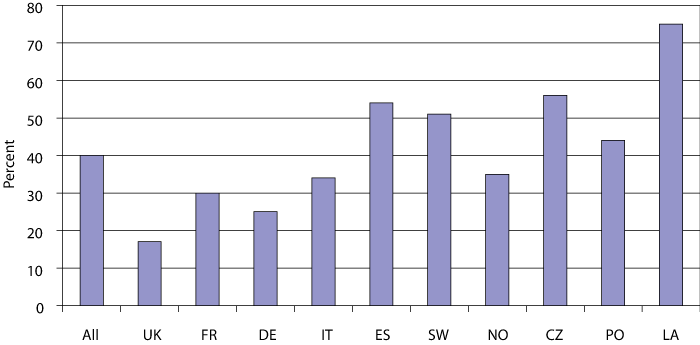
Figure 8.5 Proportion of active players who have owned illegal copies.
Source Nielsen Interactive Entertainment
The survey further shows that men are more prone to own illegal copies than women. While 43 per cent of the men in the survey responded positively to the question of whether they had owned illegal copies, only 28 per cent of the women did so. As regards the various age groups, the largest proportion who have owned illegal copies is among the youngest users: among 16–19 year-olds 47 per cent had owned illegal copies, among 20–24 year-olds, 46 per cent, among 25–30 year-olds, 36 per cent and among 30–39 year-olds, 30 per cent.
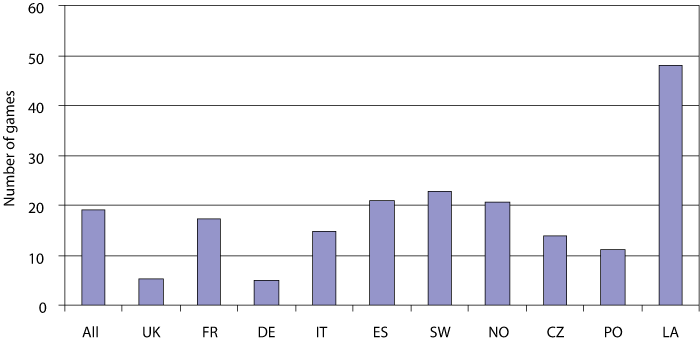
Figure 8.6 The number of illegally copied games – among those who have such games.
Source Nielsen Interactive Entertainment
Among PC owners, 45 per cent had owned illegally copied games – the corresponding figures for owners of consoles and hand-held hardware were both 37 per cent. Altogether 76 per cent of the illegally copied games the respondents had were for the PC. This is mainly because consoles and hand-held units are hardware-protected against illegal copies. In practice, this means that an illegal copy cannot be played on a console. It is possible to circumvent this by installing a chip, but this process is demanding, and considerably increases the obstacles to illegal copying.
Among the respondents who took part in the survey, 63 per cent responded that they regarded illegal copying as a criminal activity. Not unexpectedly, frequent users are more liberal in their attitudes to illegally copied video games than less frequent users.
The survey shows that illegal copies are primarily received from friends and family (52 per cent), while 26 per cent report that they download games illegally from the Internet. One out of five has purchased illegally copied games from street salesmen. As regards the number of illegally copied video games owned by those who have them, the figures are distributed as shown in figure 8.6.
The figure shows that Norwegian users who own illegally copied video games have rather more games than the average. The survey further shows that the youngest users have on average more illegally copied games than the older users who have such programmes. Not unexpectedly, frequent users have far more illegal copies than less frequent users.
As regards the question of whether one has illegally copied video games oneself, Norway scores relatively high, compared with the other countries, cf. figure 8.7.
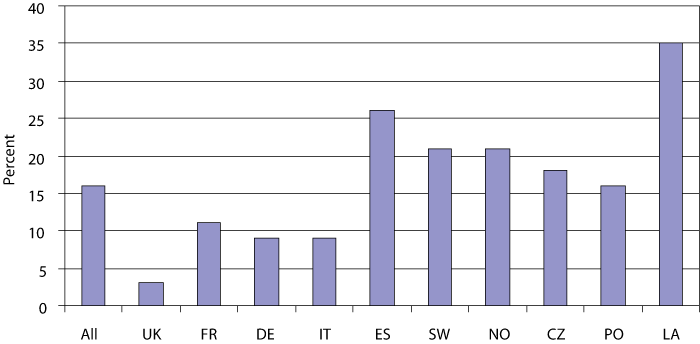
Figure 8.7 Proportion who have illegally copied games themselves.
Source Nielsen Interactive Entertainment
The survey further shows that far more men than women are involved in illegal copying (18 per cent as against 8 per cent). The proportion of persons who make illegal copies declines with age. To the question of what must be done to stop people from making or purchasing illegal copies, 82 per cent reply that a reduction in the price of video games would change their behaviour, while 40 per cent would change their behaviour if it could be documented that illegal copying was associated with organized crime. Only 27 per cent would stop illegal copying if they knew that they would be prosecuted for such actions.
According to the list made by the International Intellectual Property Alliance, lost profits from the sale of video games owing to illegal copying are estimated at USD 2.4 billion for 2005. This includes data from the countries on the organization’s priority watch list. The reality of this figure is debatable since the consumers from these countries have relatively low purchasing power.
The large losses associated with illegal copying have entailed that the US authorities have become involved up to the highest administrative and political level in relation to countries such as China. In addition, a number of countries impose strict punishment for illegal copying, in the form of both prison sentences and fines, in order to frighten potential offenders. In many countries, public awareness campaigns have been initiated in order to limit illegal copying.
8.6 The Ministry’s assessments and recommendations
In most cases, children and young people’s use of video games is a positive activity and a source of both entertainment and learning. However, some games contain elements that are not suitable for all age groups. Furthermore, some games are of such a nature that some players spend an excessive amount of time on them. Illegal copying of video games is an increasing problem. The Ministry emphasizes knowledge and consciousness-raising as measures for dealing with these issues.
8.6.1 Measures for safe use of video games
The Norwegian Media Authority has the main responsibility for consciousness-raising measures in relation to video games. The Ministry takes a positive view of the industry’s voluntary labelling scheme with age limits and content symbols (PEGI). The Ministry is also positive to the Norwegian Media Authority’s cooperation with the video game industry on development of and information on the scheme. Furthermore, the Norwegian Media Authority via the Safe Use Project has means of providing broader information measures on video games.
The Ministry will strengthen the Norwegian Media Authority’s information activities concerning safe use of video games.
8.6.2 Measures against problematical use
Enquiries to the Help Line for Game Dependency indicate increased problems associated with games not involving money, including video games. It is important that a survey be carried out on the scope of problematical use of video games.
The Ministry will strengthen knowledge concerning the prevalence of problematical use of video games.
An annual allocation of up to 0.5 per cent may be made from the proceeds of the Norwegian National Lottery for measures against game dependency, cf. section 10, second paragraph, of the Act relating to Gaming Schemes, etc. The funds are currently distributed to measures under the Government’s action plan to combat gambling problems.
The Ministry will allow funds from the allocation to measures against gambling games also to be applied to prevention of and information on problematical use of video games including those where no money is involved.
The Ministry will allow the allocation to measures against gambling games also to be applied to measures to combat problematical use of video games.
8.6.3 Measures against illegal copying
Illegal copying is a growing problem, particularly for manufacturers of PC games. This area is regulated by the Copyright Act and by international agreements. It is important to find a satisfactory balance between the copyright holder’s right to protection and the public’s right of access to intellectual property on reasonable terms.
The Ministry will strengthen work on protecting the copyrights associated with video games.